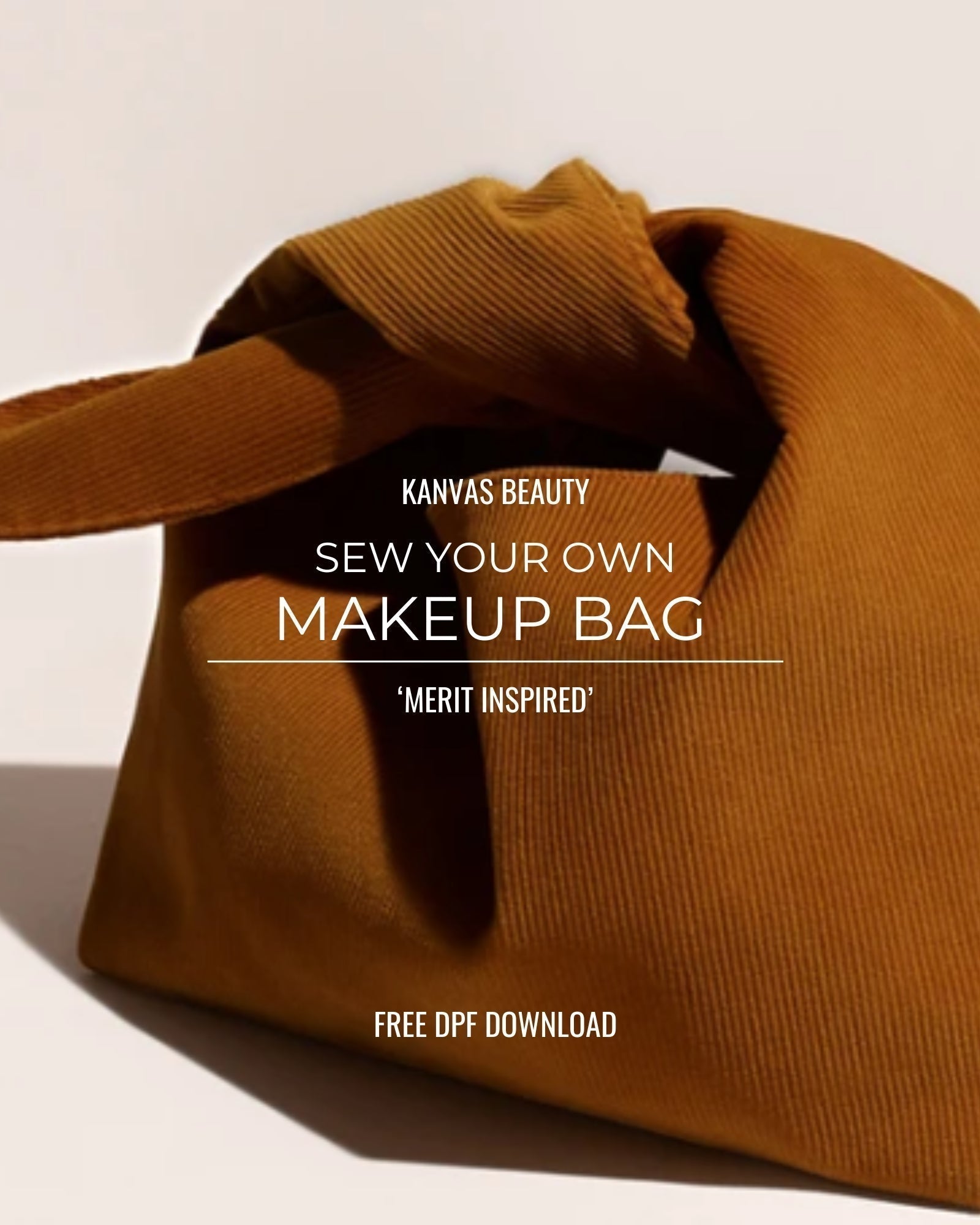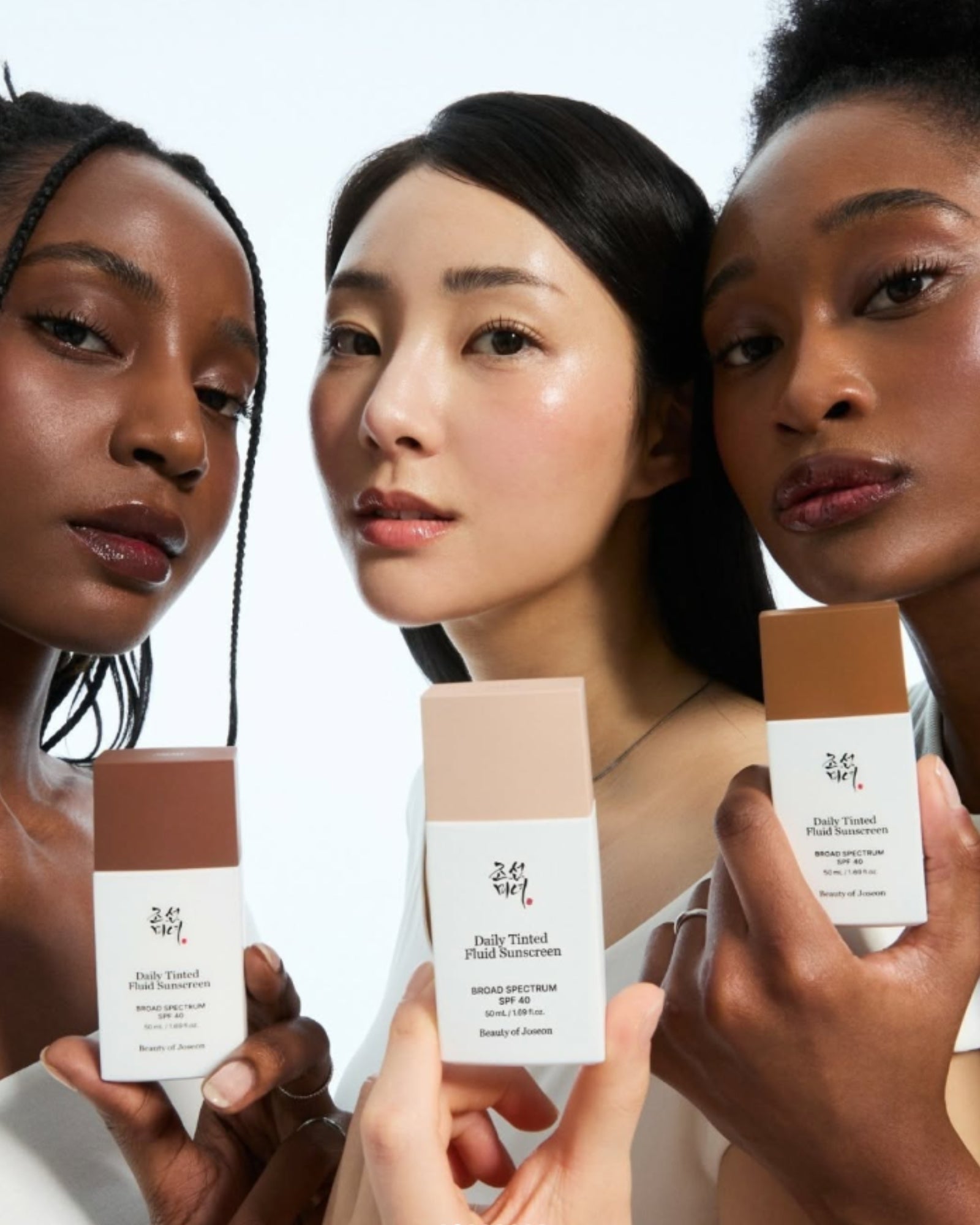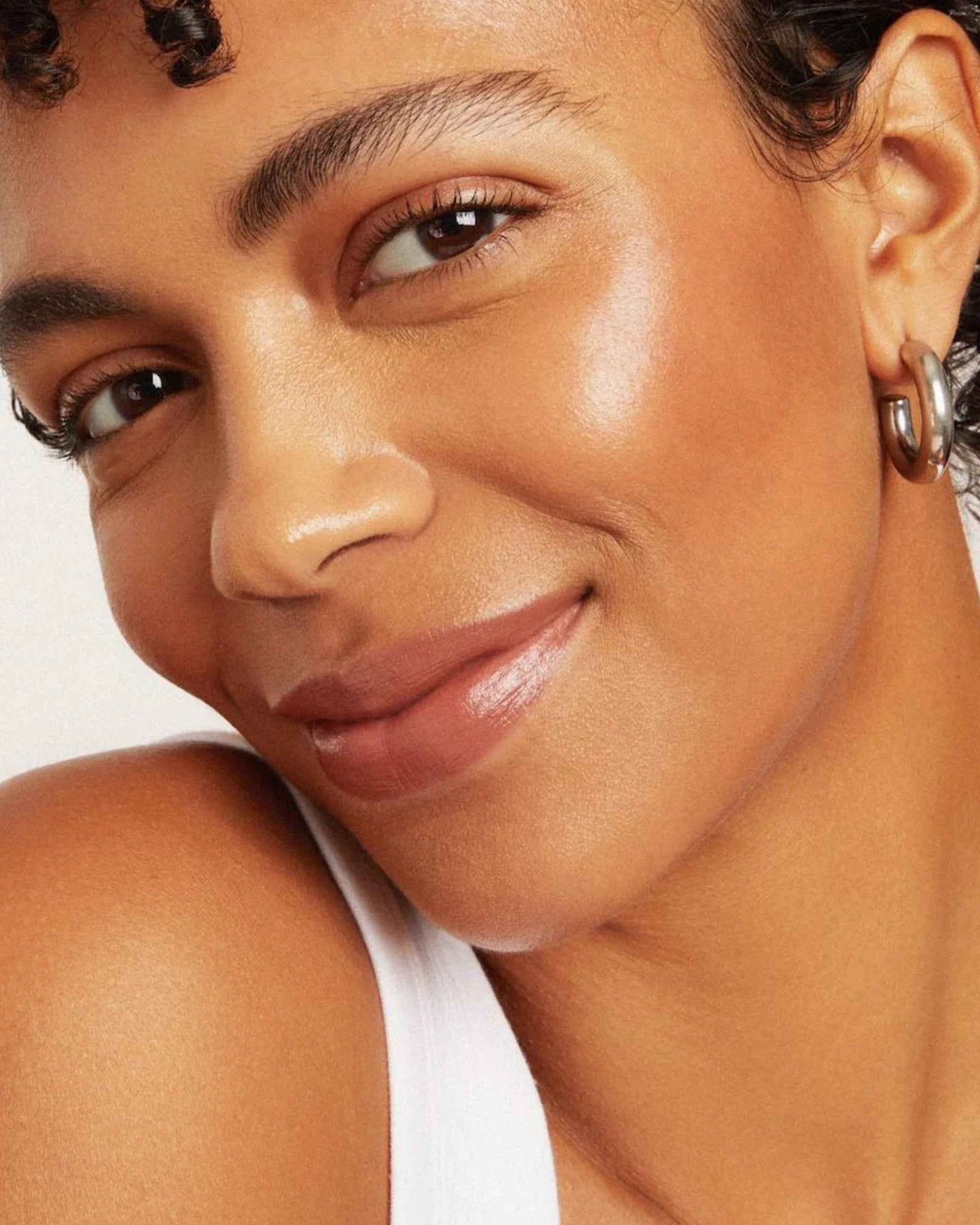Your Cart is Empty
Menu

How to use chemical exfoliants correctly
by Kanvas Beauty August 18, 2023 8 min read
2 Comments
Have you ever used an AHA or BHA product, loved the finished result and glowing skin, and continued to use it only to erupt in redness, burning and sensitivity? Or do you never get that far in the first place, with your skin hating the idea of a chemical (or any) exfoliant? Friend, you're not alone. There *is* a better way to use chemical exfoliants, so that even the most sensitive of skin will feel like they're on to a good thing. But first, let's get past the basics.
What are chemical exfoliants?
Exfoliants are products that help remove dead skin cells from the skin's surface. The benefits are less clogged pores, brighter and smoother skin, as well as improve skin cell regeneration. It can help with acne, blackheads, hyperpigmentation, in-grown hairs and even carry anti-aging benefits. Little wonder that everyone wants some type of exfoliation in their routine!
There are two types of exfoliants: physical and chemical. The physical stuff refers to scrubs, loofahs and the like: products you would have to physically rub on your skin in order to slough the dead skin off. The effects are instant and they're often the best way to exfoliate rough skin or thicker skin of the body, but can be abrasive and irritating on delicate areas such as the face.
Chemical exfoliants on the other hand, require no rubbing. They're a class of acids and there's several different types: AHAs, BHAs and their secondary derivatives, PHAs and LHAs. See the table below for their breakdown. They can be found in toners, serums, creams and every other type of skincare product. Simply applying it on your skin does the trick. The acid will eat away at dead skin, revealing fresh skin underneath.


| CHEMICAL EXFOLIANTS | ||||||||||
| Classes | Common AHAs (Alpha Hydroxy Acids) | Common BHAs (Beta Hydroxy Acids) | Common PHAs (Poly Hydroxy Acids) | Common LHAs (Lipo Hydroxy Acids) | ||||||
| Common characteristics | Water soluble, peel away surface skin cells, considered a top choice for hyperpigmentation and anti-aging | Oil soluble, penetrate below the skin's surface, able to dissolve lipids inside pores, considered a top choice for acne, blackheads and texture. Its pH is very acidic, at around 3.5. | Often referred to as "next gen AHAs", it has similar, surface-polishing characteristics of AHAs, but a larger molecular weight - making it gentler. They're also considered safer for rosacea-prone and atopic skin. |
A BHA derivative, LHAs are oil soluble but carry a larger molecular weight AND matches the skin's natural pH at 5.5. This makes it great for sensitive skin.
|
||||||
| Types | Glycolic Acid | Lactic Acid | Mandelic Acid | Salicylic Acid | Betaine Salicylate | Salix Alba/ Willow Bark extract | Gluconolactone | Lactobionic Acid | Capryloyl Salicylic Acid | |
| Functions | One of the most frequently used AHAs. Also the strongest AHA because of its small molecular weight (i.e. can penetrate skin easily). Not recommended for sensitive skin or for dark skin at high concentrations. | A milk-derived AHA that has a medium-size molecular weight. This makes it gentler than glycolic acid. | An AHA derived from bitter almonds that has the largest molecular weight. This makes it the gentlest and generally best alternative for senstive skin and for dark skin at high concentrations. |
The most common and strongest type of BHA. Really does the job at clearing pores and acne, and shouldn't irritate because it has a relatively large molecular weight compared to AHAs. However, it can be drying.
|
A gentler, and less-drying alternative to Salicylic Acid that is still as effective, albeit usually at a higher concentration or more frequency of usage. | Best for daily or frequent use and for ultra-senstive/dry skin. Also the weakest of the 3, so it may not be enough for strong acne/blackhead/congestion issues. | This PHA has been said to have antimicrobial properties as well as bring an exfoliant, so that would make it a great choice for acne-prone skin that's also dry and sensitive. | This PHA is your go-to if you have especially dry and sensitive skin. It's gentler than gluconolactone, but more hydrating and better at barrier-repair. | While its penetration is slower and shallower than BHA, it's still effective at reducing comedones and is more suitable for sensitive and thinner (aged) skin. Some studies have shown it to be effective at boosting microcirculation and helping stimulate collagen and elastin production, too. | |
| Suggested products | Acure - Resurfacing Glycolic & Unicorn Root Cleanser, COSRX - AHA 7 Whitehead Power Liquid and Purito - AHA BHA Refreshing Solution. | ISNTREE - Clear Skin 8% AHA Essence, Jumiso - Yes I Am Toner AHA 5% and SVR Laboratories - SEBIACLEAR Cleansing Gel. | By Wishtrend - Mandelic Acid 5% Skin Prep Water and Some By Mi - AHA 10% Amino Peeling Ampoule. | innisfree - Super Volcanic Pore BHA Cleansing Oil, AXIS-Y - Spot The Difference Blemish Treatment and Sanoflore - Aqua Magnifica Skin Perfecting Botanical Essence. | COSRX - BHA Blackhead Power Liquid, ISNTREE - Clear Skin BHA Toner and Dr. Ceuracle - Tea Tree Purifine Duo Set. | Pyunkang Yul - Acne Toner, Some By Mi - Snail Truecica Miracle Repair Serum and Benton - Snail Bee High Content Essence. | SVR Laboratories - SEBIACLEAR Cicapeel, ISNTREE - Clear Skin PHA Sleeping Mask and Mary & May - Cica Tea Tree AHA PHA Toner. | Some By Mi - AHA BHA PHA 30 Days Miracle Toner, NEOGEN - Pore Tight Aqua Mask Set and SVR Laboratories - SEBIACLEAR Micro Peel. | SKIN&LAB - Porebarrier Cleansing Balm, Acwell - Real Aqua Balancing Toner and Jumiso - Pore-Rest LHA Sebum Control Facial Cream. | |
 Suggested Products: Acure - Resurfacing Glycolic & Unicorn Root Cleanser, COSRX - AHA 7 Whitehead Power Liquid and Purito - AHA BHA Refreshing Solution. ISNTREE - Clear Skin 8% AHA Essence, Jumiso - Yes I Am Toner AHA 5% and SVR Laboratories - SEBIACLEAR Cleansing Gel. By Wishtrend - Mandelic Acid 5% Skin Prep Water and Some By Mi - AHA 10% Amino Peeling Ampoule.
Suggested Products: Acure - Resurfacing Glycolic & Unicorn Root Cleanser, COSRX - AHA 7 Whitehead Power Liquid and Purito - AHA BHA Refreshing Solution. ISNTREE - Clear Skin 8% AHA Essence, Jumiso - Yes I Am Toner AHA 5% and SVR Laboratories - SEBIACLEAR Cleansing Gel. By Wishtrend - Mandelic Acid 5% Skin Prep Water and Some By Mi - AHA 10% Amino Peeling Ampoule.
 Suggested Products: innisfree - Super Volcanic Pore BHA Cleansing Oil, AXIS-Y - Spot The Difference Blemish Treatment and Sanoflore - Aqua Magnifica Skin Perfecting Botanical Essence. COSRX - BHA Blackhead Power Liquid, ISNTREE - Clear Skin BHA Toner and Dr. Ceuracle - Tea Tree Purifine Duo Set. Pyunkang Yul - Acne Toner, Some By Mi - Snail Truecica Miracle Repair Serum and Benton - Snail Bee High Content Essence.
Suggested Products: innisfree - Super Volcanic Pore BHA Cleansing Oil, AXIS-Y - Spot The Difference Blemish Treatment and Sanoflore - Aqua Magnifica Skin Perfecting Botanical Essence. COSRX - BHA Blackhead Power Liquid, ISNTREE - Clear Skin BHA Toner and Dr. Ceuracle - Tea Tree Purifine Duo Set. Pyunkang Yul - Acne Toner, Some By Mi - Snail Truecica Miracle Repair Serum and Benton - Snail Bee High Content Essence.
 Suggested Products: SVR Laboratories - SEBIACLEAR Cicapeel, ISNTREE - Clear Skin PHA Sleeping Mask and Mary & May - Cica Tea Tree AHA PHA Toner. Some By Mi - AHA BHA PHA 30 Days Miracle Toner, NEOGEN - Pore Tight Aqua Mask Set and SVR Laboratories - SEBIACLEAR Micro Peel.
Suggested Products: SVR Laboratories - SEBIACLEAR Cicapeel, ISNTREE - Clear Skin PHA Sleeping Mask and Mary & May - Cica Tea Tree AHA PHA Toner. Some By Mi - AHA BHA PHA 30 Days Miracle Toner, NEOGEN - Pore Tight Aqua Mask Set and SVR Laboratories - SEBIACLEAR Micro Peel.
 Suggested Products: SKIN&LAB - Porebarrier Cleansing Balm, Acwell - Real Aqua Balancing Toner and Jumiso - Pore-Rest LHA Sebum Control Facial Cream.
Suggested Products: SKIN&LAB - Porebarrier Cleansing Balm, Acwell - Real Aqua Balancing Toner and Jumiso - Pore-Rest LHA Sebum Control Facial Cream.
Firstly, make sure your skin barrier is in good shape.
A healthy skin barrier matters. The outer layer of your skin (the epidermis) is like a security guard. It protects against moisture loss, environmental aggressors, and potential skin irritants. Because exfoliation generally works on this outer layer, applying a chemical or physical exfoliant on a damaged skin barrier can lead to inflammation, excessive redness and burning. It can also leave your skin vulnerable to skin conditions such as eczema, rosacea and dryness.
What can compromise your skin barrier? Among other things, sun damage, pustules pushing through the skin, the wrong skincare products and over-exfoliation. If you think your skin barrier might need some work, the first thing to do is drop the exfoliants and active ingredients, and opt for a low-pH cleanser, hydrating toner, barrier-building serums, semi-occlusive creams and a solid SPF to allow your skin to heal. Trust us, it's worth it! This R&R routine can repair damaged skin in as little as a few weeks (but can extend to a few months, depending on the shape of your skin) and will make a skincare routine with active ingredients sing. Check out some of our favourite pro-barrier products here.
Secondly, choose the right chemical exfoliant for your skin type.
Check out the above table to help you find the right exfoliant for you. A good rule of thumb is to choose BHAs and LHAs for acne, congestion and blackheads, while AHAs and PHAs are your go-to for hyperpigmentation. Now remember, less is more when it comes to exfoliants. Be kind to your skin and start off with a low percentage, and building it up to find out what your skin responds to best. The truth is that most of us won't need a 20% strength AHA acid exfoliant, ever! You can see results with products that contain as little as 2% (particularly with BHAs and their derivatives). Starting off too high can damage your skin barrier straight off the bat, which means you'll need to pare back all your active ingredients and start the healing process.
Thirdly, get the frequency right.
Contrary to a lot of popular literature out there, you don't need to use a chemical exfoliant daily or even weekly. Particularly if your skin is on the dry or aging side, you might find that fortnightly or even monthly is enough, depending on the products you use. Some of us respond exceedly well to a daily exfoliation toner while others prefer a strong resurfacing treatment once a month. It's really about you and what your skin likes best.
Always wear a strong SPF.
SPF is truly your BFF! Not only does it protect your skin from cancers, help prevent premature aging and reduce the incidence of hyperpigmentation, but it also protects your skin barrier. Chemical exfoliants can make your skin more vulnerable to UV damage, which is why it is so critical to wear a broadspectrum sunscreen during the day (even if you're indoors).
Lastly, make sure the supporting ingredients in your skincare routine are compatible.
It can be a bit confusing to remember what active ingredients can and can't mix with each other. What we'd suggest is avoiding mixing active ingredients altogether, especially if your skin is sensitive. That means when you're using an exfoliant, avoid vitamin C, retinoids, niacinamide and the like. Save it for the days/nights you're not exfoliating. Instead, exfoliation day should be paired with a low pH cleanser (or toner after cleansing) and plenty of emollients as well as humectants. Think facial oils, ceramides, panthenol, cica, snail mucin and hyaluronic acid.

A chemical exfoliant will suit the majority of skin types, but it isn't a must for absolutely everyone!
Some of us just won't ever take to a chemical exfoliant, and that's okay. Our skin might be too sensitive, we may prefer the satisfaction of a physical scrub, or our skin is already benefitting from the keratolytic properties of the other ingredients in our skin care such as retinol or azelaic acid (yes, retinoids can act as an exfoliant too!).
Your chemical exfoliant checklist
✓ Start off with a strong skin barrier.
✓ Choose the exfoliant and strength that's right for you (it might take some trying and testing).
✓ Settle on the frequency that's right for you, keeping in mind that it can change as your skin's needs evolve.
✓ Pair your exfoliant with a good barrier-loving product. For AHAs, try a facial oil afterwards (like Acure's The Essentials Hemp Seed Oil) or a semi-occlusive essence (such as Jumiso's Snail EX Ultimate Boost Facial Essence). For BHAs, try a serum like Purito's Centella Unscented Serum or SKIN&LAB Barrierderm Milky Serum.
✓Avoid using other active ingredients on the days your exfoliating, to reduce the risk of skin barrier damage.
✓Always use an SPF during the day.
****
Find the right chemical exfoliant for you online in Australia at Kanvas Beauty
You can shop all our chemical exfoliants right here on Kanvas Beauty.
We ship Australia-wide, including all the major cities (Melbourne, Sydney, Brisbane, Perth, Darwin, Adelaide and Canberra). Enjoy free standard shipping with any purchase over $50, and free express shipping with any order over $99. If you’re new to Kanvas Beauty, take an additional $20 off your first order with us (use code WELCOME20 at checkout).
Happy shopping! If you have further questions on exfoliation or anything else, drop us a line on chat or on email: hello@kanvasbeauty.com.au.
2 Responses
Erfina N
September 24, 2024
Penjelasan tentang AHA, BHA, dan turunannya jelas dan mudah dipahami. Panduan penggunaan dan pemilihan bahan yang tepat untuk beberapa masalah kulit sangat membantu. Tips tentang perlindungan kulit dan SPF juga sangat relevan. Terima kasih atas tipsnya yang bermanfaat!
Leave a comment
Comments will be approved before showing up.
Also in Kanvas Kult Blog

Kanvas Beauty Makeup Bag Sewing Pattern - Free PDF Pattern
by Kanvas Beauty July 30, 2025 3 min read
Read More
Beauty of Joseon Daily Tinted Fluid Sunscreen Review
by Kanvas Beauty February 13, 2025 5 min read
Our honest Beauty of Joseon Daily Tinted Fluid Sunscreen Review.
Shields like SPF, looks like tint, feels like skincare. That's the tagline of Beauty of Joseon's new Skin Tints and ahhh it sounds so good! We were lucky enough to receive promotional samples from the brand, and here's what we thought (TDLR; it's freaking amazing and we can't wait to stock it).

My Axiology Fungdation Review (with swatches)
by Kanvas Beauty February 11, 2025 5 min read
An honest Axiology Foundation Review.
We saw the promo for Axiology's new mushroom-infused foundation. It's called Fungdation and it looked so good! Kellie couldn't wait to try it. Here's what she thought, as well as pics on how it looks on the skin. TLDR; it isn't for everyone, but which foundation is? If your skin type and texture preference matches the Fungdation profile, you'll never look back.
BROKE AF!? WANT $20 OFF YOUR FIRST ORDER?
BECOME A KULT MEMBER AND JOIN THE PINK SIDE
💗
Join us for even more rewards, discounts, freebies and a special surprise on your birthday!

Kanvas Beauty
September 25, 2024
@ERFINA N
Sama-sama! Senang Anda merasakan manfaatnya :)